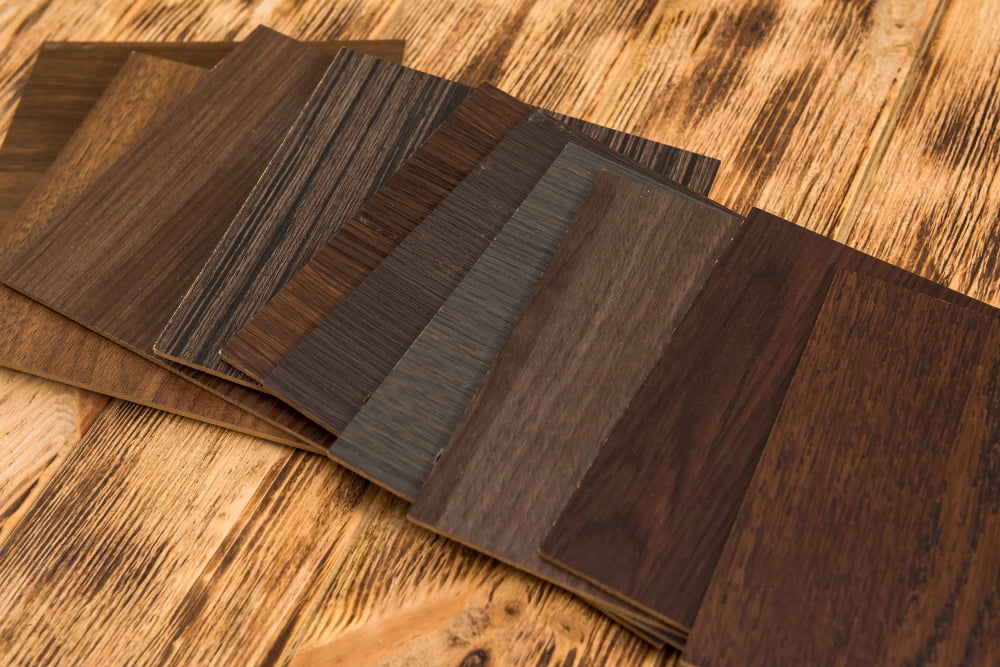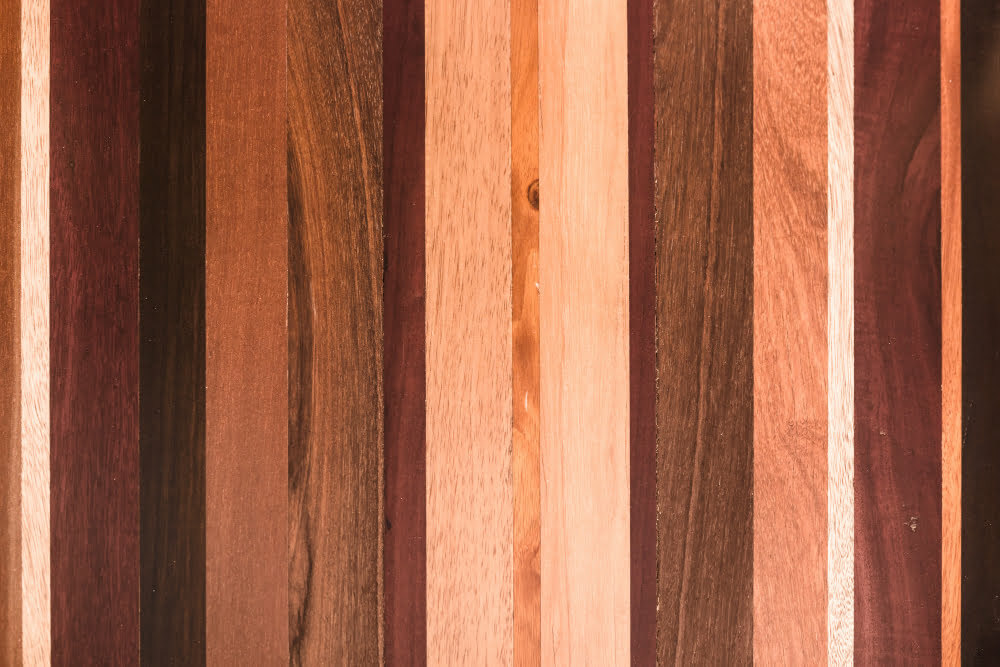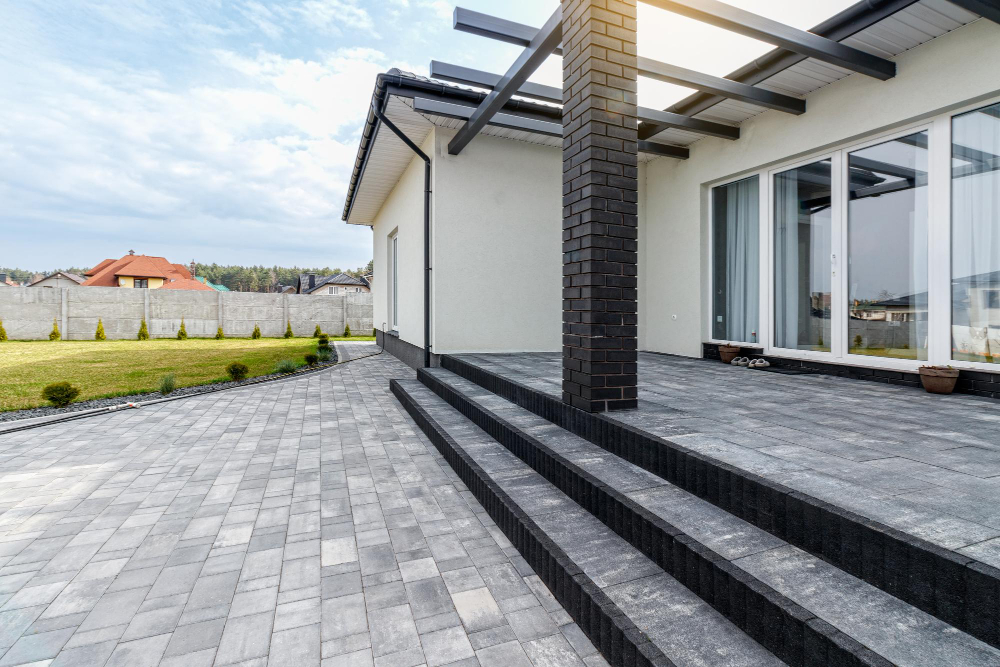Last updated on
Choosing the right hardwood for your project isn’t tiring anymore with our guide. Get an idea of popular hardwoods, their characteristics, and more!
When it comes to woodworking or any interior design project, the choice of hardwood can significantly affect the overall aesthetic and functionality.
Choosing the right hardwood for your project can be daunting with so many options. So, to help you make an informed decision, our comprehensive guide will walk you through some popular hardwood options like mahogany, oak, maple, cherry, etc., with their unique characteristics.
Here you will also find the essential factors to consider when starting a woodworking project. So, let’s dive in and find the ideal hardwood to bring your project to life!
Understanding Your Project Requirements

Assessing your project requirements is crucial before delving into the world of hardwood options.
Purpose
You need to know the primary goal of your project. Are you creating furniture, flooring, cabinetry, or something decorative? These questions will help you understand your need, as each purpose has unique needs regarding durability, hardness, and aesthetics.
So, it’s essential to determine the purpose of choosing the right hardwood for your project.
Location & Usage
Where will your project be located, and how will it be used? Consider factors such as exposure to moisture, foot traffic, and potential wear and tear. Is it a high-traffic area like a kitchen or a low-traffic space like a bedroom?
Understanding the location and usage will help you select a hardwood that can withstand the specific demands of your project.
Budget
Let’s talk budget! Evaluating your financial constraints is essential when selecting the hardwood for your project.
Remember that hardwood prices can vary significantly depending on the species and quality. While high-quality hardwoods may have a higher upfront cost, they often offer outstanding durability and longevity, saving you money in the long run.
However, you can also get durable but cheapest hardwood ideas for your DIY project to save money.
So, set a realistic budget and explore options within that range to find the best hardwood that meets your project requirements without breaking the bank.
Popular Hardwood Options to Select

You can choose the right hardwood when you have figured out your goals, budgets, and other project details.
Oak Wood
Oak is a top contender among hardwoods, known for its exceptional durability and versatility. With two popular varieties, red and white oak, you have options to match your style.
Red oak exudes a warm and timeless aesthetic, while white oak boasts a slightly lighter tone. So, oak is an excellent choice whether you’re considering flooring, furniture, or cabinetry.
Moreover, its strength and resilience make it perfect for high-traffic areas, and its natural beauty adds a touch of elegance to any project. So, if you’re seeking a hardwood that combines durability, versatility, and classic appeal, oak is the way to go.
Maple Wood
Maple hardwood is renowned for its strength and captivating grain patterns, making it a popular choice for many projects. Its light color palette, ranging from creamy white to pale brown, adds a touch of natural beauty to any space.
If you’re designing furniture, cabinets, or kitchen accessories, maple’s resistance to warping and its ability to take stains exceptionally well make it an ideal option.
Moreover, maple wood’s durability and aesthetic appeal bring functionality and style to your project. So, if you’re looking for a hardwood that combines strength, attractive grain patterns, and easy customization, maple is a great choice.
Walnut Wood
When it comes to sophistication and elegance, walnut takes the spotlight. This highly prized hardwood is known for its rich, dark color and exquisite grain patterns. It’s a favorite choice for high-end furniture and decorative pieces, as it adds a touch of luxury to any project.
Moreover, walnut’s natural beauty is unmatched, creating a captivating visual appeal that enhances the overall aesthetic. Its versatility and timeless charm make it popular among those who want to elevate their projects to the next level.
So, if you want to create a refined and sophisticated look, walnut is the perfect hardwood option.
Cherry Wood
Cherry wood is a fantastic choice if you’re aiming for a warm and timeless ambiance. Its warm, reddish-brown hue deepens over time, adding character and charm to any project.
People commonly use cherry hardwood for their furniture and cabinetries for its smooth texture and distinctive grain patterns that offer a classic and enduring appeal.
Additionally, its natural beauty and versatility make it a go-to option for those seeking a touch of elegance. So, if you’re looking to infuse your project with a rich and inviting atmosphere, embrace the natural warmth and beauty that cherry brings to the table!
Mahogany Wood
If you’re searching for a hardwood with richness and sophistication, mahogany is the perfect choice. Its deep reddish-brown color and smooth finish create a stunning visual impact.
Did you know many highly seek mahogany wood for high-quality furniture, interior trim, and decorative accents? Moreover, this hardwood showcases an attractive grain pattern and offers excellent workability, making it a favorite among craftsmen.
So, you should definitely use mahogany wood if you’re looking to create a statement piece or elevate your interior design or just add a touch of luxury and refinement.
Teak Wood
Teak hardwood has exceptional durability and natural resistance to moisture and decay and is an excellent choice for various projects. It has beautiful golden-brown color, and unique grain patterns, making it a standout option for furniture, flooring, and outdoor applications.
Moreover, teak’s high oil content contributes to its natural weather resistance, making it ideal for outdoor furniture and decking. With its strength and longevity, teak can withstand the test of time, requiring minimal maintenance.
Teak is an excellent choice for you that combines beauty, durability, and versatility, helping you revamp your living space to new heights.
Hickory Wood
Hickory is a fantastic choice if you’re seeking a hardwood with exceptional strength and a unique character. Hickory is known for its durability and resilience. It’s also commonly used for flooring, furniture, and cabinetry.
Moreover, hickory has distinct grain patterns, ranging from wavy to straight, adding a touch of visual interest to any project. Its natural variations in color, from pale white to dark brown, also create a dynamic and rustic appeal.
With its ability to withstand heavy use and resist dents and scratches, hickory is a reliable option for high-traffic areas. So, hickory is the perfect fit if you want a hardwood that combines strength, beauty, and a touch of ruggedness.
Composite Wood
Composite wood, also known as engineered wood, is a man-made product that combines real wood with other materials. For patios and decks, switching to a composite decking material might be the best option.
Composite wood is created by binding or gluing together at least three layers of wood (often a thin ply of hardwood on top of a core of high-quality plywood), in a process that applies heat and pressure. The result is a highly versatile product that offers several key benefits over traditional hardwood.
Composite wood provides excellent stability. Because it’s constructed in layers, with the grain direction alternating between each one, it is less likely to warp, shrink, or expand with changes in humidity or temperature. This makes it a particularly good choice for projects where stability is a high priority, such as flooring or cabinetry in rooms with variable environmental conditions.
Composite wood offers a high degree of uniformity. Since it’s a man-made product, there can be greater control over the wood’s color, grain pattern, and density. This can be especially beneficial for larger projects or for those requiring a more consistent aesthetic.
Composite wood can be more environmentally friendly than solid hardwood. It often makes use of wood byproducts or fast-growing, less expensive wood species for the inner layers, thereby reducing demand for slower-growing, more expensive hardwood species.
Some Popular Softwood Options

Here are some popular softwood options:
Pine Wood
Pine wood is a popular softwood option that offers any project a charming and rustic appeal. It’s known for its light color and distinct grain patterns and is commonly used in furniture, flooring, and interior trim.
Moreover, its affordability and wide availability make it a budget-friendly choice for many DIY enthusiasts.
While pine may be softer than hardwoods, it is still durable, and you can easily work with it. With proper staining or painting, pine can achieve various looks, from natural and earthy to bright and contemporary.
So, if you’re seeking a versatile and cost-effective option, pine is worth considering for your next project.
Cedar Wood
Looking to add a touch of natural beauty and aromatic charm to your project? Look no further than cedar!
Cedar is a softwood known for its distinct aroma and durability and is a fantastic choice for various applications. Whether you’re building outdoor furniture, decking, or even lining a closet, cedar’s natural resistance to rot, insects, and decay makes it a reliable option.
Moreover, the warm, reddish-brown hues and appealing grain patterns of cedar add a rustic and inviting touch to any space. So, if you want wood that looks great and brings a refreshing scent to your project, cedar fits the criteria perfectly.
Evaluating Hardwood Characteristics for Your Project

Now that you’re familiar with some popular hardwood options evaluating the characteristics that matter most for your project is essential. From durability and hardness to grain pattern and finishing options, let’s explore how to make the right choice.
Durability
When choosing a hardwood for your project, it’s crucial to consider its durability. Different hardwoods have varying levels of durability. Hardwoods like oak and maple are known for their exceptional durability, making them perfect for high-traffic areas.
However, softer hardwoods like cherry may be more susceptible to dents and scratches, so keep that in mind based on your project’s specific needs.
Hardness
Hardness determines a wood’s resistance to indentation and wear. The Janka hardness scale measures this property. Hardwoods like oak or maple with high Janka ratings are recommended for high-traffic areas, such as flooring.
Grain Pattern & Appearance
The grain pattern of hardwood affects its overall appearance. So, if you look at some species, like walnut and mahogany, it features pronounced grain patterns that add character to the project.
However, others, like maple, have a more subtle grain, providing a cleaner, contemporary look.
Color & Finishing
Consider the natural color of the wood and how it will complement your project’s design scheme. Hardwoods can be stained or finished to alter their appearance, so keep in mind the desired outcome and the wood’s suitability for finishing.
Other Characteristics to Consider
It’s better to consider factors such as sustainability and maintenance while choosing the hardwood for your project.
Sustainability
Sustainability is an essential factor to consider. Look for responsibly sourced and certified hardwoods by organizations like the Forest Stewardship Council (FSC). Choosing sustainably harvested material helps preserve forests and promotes environmental responsibility.
Maintenance
Different hardwoods have varying maintenance requirements. Some may need regular sealing or refinishing, while others may require minimal upkeep. So, consider your willingness and ability to maintain the wood’s appearance over time.
The Takeaway
Choosing the right hardwood for your project doesn’t have to be overwhelming. When you consider factors like purpose, location, and budget and evaluate the unique characteristics of popular hardwood options, you’re well-equipped to make an informed decision.
So, whether it’s walnut’s timeless elegance, the cherry’s warm charm, or the oak’s durability, find the hardwood that speaks to your style and project requirements.
Get ready to embark on your woodworking adventure and create something truly remarkable! Happy woodworking!
Related reading:
Table of Contents





